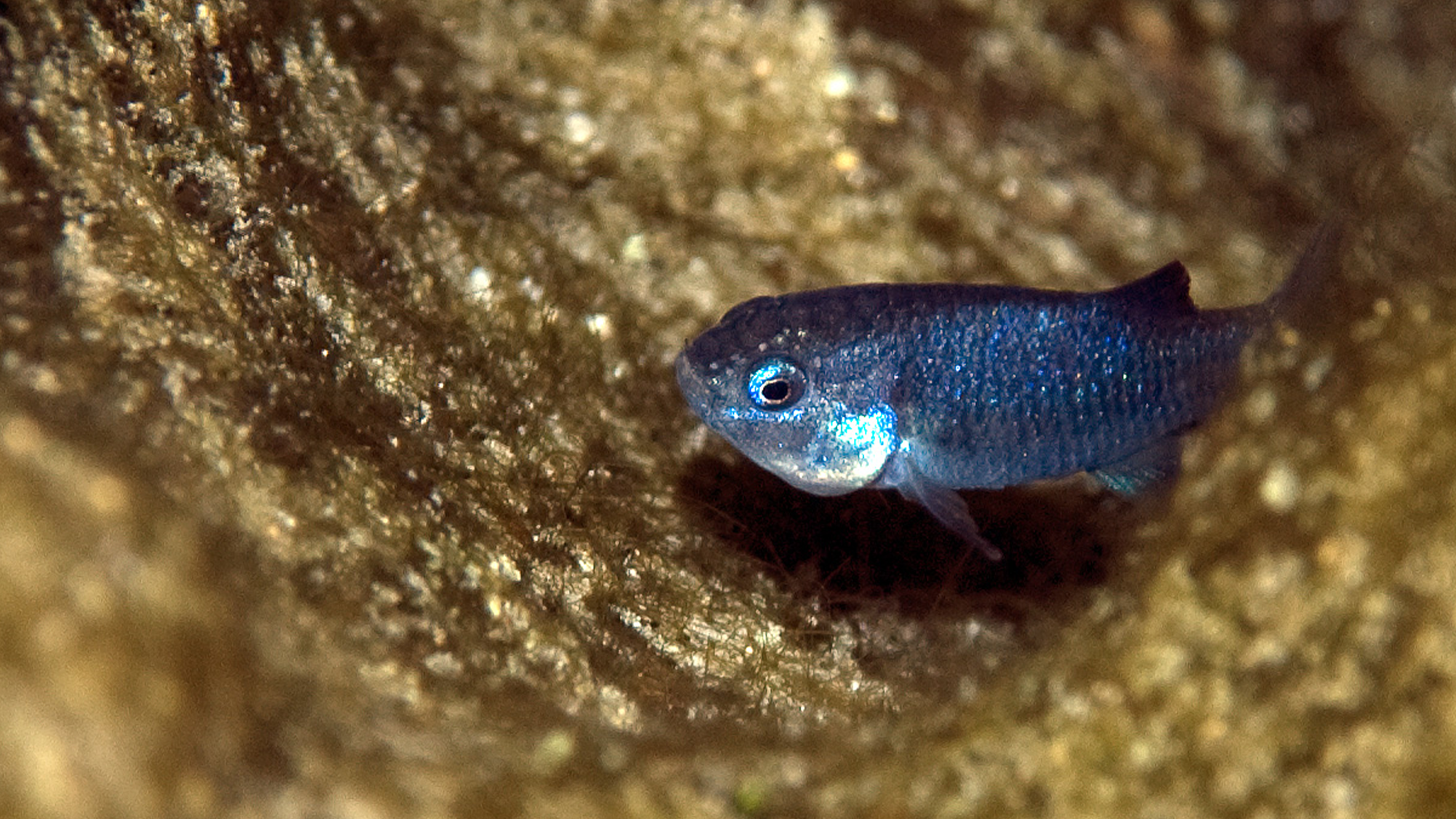
A rare and ruthlessly resilient aquatic creature is continuing its come back. Biologists counted 191 Devils Hole pupfish (Cyprinodon diabolis) during their annual spring season fish count in Death Valley National Park–one of the driest places on Earth. This is the highest number of Devils Hole pupfish that scientists have observed in 25 years, according to the National Park Service.
These fish are critically endangered by virtue of the hellish environment they call home. Devils Hole is a more than 500 feet-deep, water-filled cavern in California’s Death Valley National Park near Ash Meadows National Wildlife Refuge in Nevada. Despite being a desert, this region was underwater about 542 to 251 million years ago. Those waters receded over time and the pupfish have lived in this area for at least 10,000 years.
The pupfish are now only found in the upper 80 feet of the cave on an 11-foot by 16-foot shallow shelf in the cavern’s entrance. This is the smallest habitat of any vertebrate species on Earth. The water is about 93 degrees Fahrenheit all year, it has scarce food resources, and oxygen levels that kill other fish. A 2022 study found that the Devils Hole pupfish is also one of Earth’s most inbred species. This lack of genetic variation makes it difficult for them to reproduce and thrive.
[Related: Extremely rare pupfish are thriving in Death Valley National Park.]
A rare West Coast tropical storm system may have given this struggling species a bit of a reprieve, In August 2023, Hurricane Hilary soaked the area with about two inches of rain. While flooding can have negative effects on fish in the short-term, the storm benefited the fishes’ ecosystem. Hilary added nutrients to the water that washed off of the surrounding land surface.
The fish are counted every spring and fall. Before the mid-1990s, scientists counted roughly 200 to 250 Devils Hole pupfish every spring. Over roughly 20 years, the population dropped to an average of around 90 fish. The all-time low fish count was in 2013, when only 35 of these blobby swimmers were counted. Populations have slowly risen through the last decade.
In early April, scientists SCUBA dived as deep as 100 feet down to count the fish. There were 191 observable pupfish, the highest spring count recorded since March 1999.
“It’s exciting to see an increasing trend, especially in this highly variable population,” US Fish and Wildlife Service Senior Fish Biologist Michael Schwemm said in a statement. “Increasing numbers allow the managing agencies to consider research that may not have been possible in the past, when even slight perturbations of habitat or fish had to be completely avoided. We’re excited about the future directions with respect [to] managing this species.”
[Related: A rare fish with ‘hands’ is spotted in a surprising place.]
Some on-site biologists also noted that the pupfish appeared to be in good condition and were very active. Courting and spawning paris were also seen during last month’s fish count.
“It was really encouraging to see such a large number of young fish during these spring dives,” Supervising Fisheries Biologist for the Nevada Department of Wildlife Brandon Senger said in a statement. “Conditions within Devils Hole looked healthy, so we have hopes of high recruitment over the coming months that will lead to a large population in the fall.”
The next pupfish count is scheduled for fall 2024.
"fish" - Google News
May 10, 2024 at 12:10AM
https://ift.tt/VzMvRrU
Devils Hole pupfish are clawing their way back from the brink of extinction - Popular Science
"fish" - Google News
https://ift.tt/hm8J5Ok
https://ift.tt/29GN1EZ
Bagikan Berita Ini














0 Response to "Devils Hole pupfish are clawing their way back from the brink of extinction - Popular Science"
Post a Comment